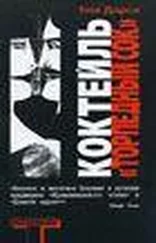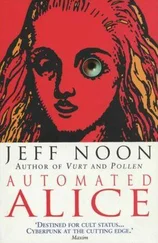Jeff Noon - Pixel Juice
Здесь есть возможность читать онлайн «Jeff Noon - Pixel Juice» весь текст электронной книги совершенно бесплатно (целиком полную версию без сокращений). В некоторых случаях можно слушать аудио, скачать через торрент в формате fb2 и присутствует краткое содержание. Год выпуска: 2000, ISBN: 2000, Издательство: Black Swan, Жанр: Киберпанк, Современная проза, на английском языке. Описание произведения, (предисловие) а так же отзывы посетителей доступны на портале библиотеки ЛибКат.
- Название:Pixel Juice
- Автор:
- Издательство:Black Swan
- Жанр:
- Год:2000
- ISBN:0-552-99937-7 / 978-0-552-99937-3
- Рейтинг книги:3 / 5. Голосов: 1
-
Избранное:Добавить в избранное
- Отзывы:
-
Ваша оценка:
- 60
- 1
- 2
- 3
- 4
- 5
Pixel Juice: краткое содержание, описание и аннотация
Предлагаем к чтению аннотацию, описание, краткое содержание или предисловие (зависит от того, что написал сам автор книги «Pixel Juice»). Если вы не нашли необходимую информацию о книге — напишите в комментариях, мы постараемся отыскать её.
Pixel Juice — читать онлайн бесплатно полную книгу (весь текст) целиком
Ниже представлен текст книги, разбитый по страницам. Система сохранения места последней прочитанной страницы, позволяет с удобством читать онлайн бесплатно книгу «Pixel Juice», без необходимости каждый раз заново искать на чём Вы остановились. Поставьте закладку, и сможете в любой момент перейти на страницу, на которой закончили чтение.
Интервал:
Закладка:
· To successfully complete an objective, the winning player must get back safely to the correct starting location.
· The Pimp must take all the money off all the other players, without being arrested by the Pig. The Pro must not leave him; the Punter must not beat him in combat.
· The Pro must get through the night with her initial resources intact, and without being arrested by the Pig. She must not fall in love with the Punter, or get beaten up by the Pimp.
· The Punter must have sex with the Pro, without being arrested by the Pig. He must try to get the Pro to fall in love with him, thereby not having to pay her. He must not be beaten in combat by the Pimp.
· The Pig must arrest the Pimp. He must receive a bribe off the Punter. He must have sex with the Pro, without paying.
· Sexually Transmitted Diseases: if infected, a player will lose an escalating number of stamina points each turn. Cures can be found at the Drug Dealer's pad, or from the Ail-Night Chemist's.
· Sex without a Condom card increases the risk of disease by ten points.
· Various illegal drugs can be purchased from the Drug Dealer. If a player experiences a Bad Trip, two stamina points are lost. Poppers increase the strength of Pleasure cards by five points.
· Any player caught in possession of drugs by the Pig loses 6 points, unless they give the drugs to the Pig as a bribe.
· If the Punter is spotted by his Wife, he loses 5 points.
· The Pimp must be male. The Pig must be male. The Pro may be male or female, or transsexual. The Punter may be male or female. If the Punter is male, and the Pro is male, the Punter is deemed to be Homosexual. Homosexuals play the game at greater risk.
· If the Pimp is killed, any other player can become the new Pimp, except for the Pro, for whom there can be no escape.
· The Pig may never be arrested, not even for murder.
· Any player surviving Fetish Booth # 7 is deemed to have won the game, even if their overall objective is not yet reached.
(text ends)
* Addendum. The actual 'game', to which the above leaflet offers instruction, has never been found, nor any mention of it. This has led to certain theories stating that the game was meant to be played 'for real' on the streets of Soho. Some commentators have even speculated that the instructions refer not to a game at all, but to real life.
CHROMOSOFT MIRRORS (V.4.2)
The dramatic rise and fall of the Chromosoft empire has already been expertly charted, especially the part that Mirrors version 4.2 played in the short and dramatic end. I offer the following story as a more human addendum to the official history. It may illuminate a dark passing, if only with a single beam of truth. Concerned as they are with the bigger picture, none of the extant histories have managed to reveal the actual person responsible for the final, terrible error. It was, of course, Chromosoft's policy that all mistakes be veiled by collective responsibility.
My grandmother, Elisa Gretchen, died before I was born. Any knowledge I had of her life came through borrowed memories, until my discovery of her private journal. I need not go into the details of this discovery, except to say that the primitive nature of the recording medium necessitated the expensive purchase of an antique cd-rom player.
Elisa was on the famous skunk team that came up with the original idea for the Mirrors technology (code-named the 'Alice' project), and was active during all stages of its development and demo-testing. Later on she was assigned to the troubleshooting team, which suffered heavily during the fretful launch period. Version 1.0 was riddled with bugs, and the new interface itself so strangely inhuman that the critics were quick to predict the company's demise, especially with its main competitors riding high on the 'back to nature' campaign of the fashionable DOS revival. Version 1.1 ironed out some of the problems, and v.1.2 introduced the new feedback loop dynamics. It was the major relaunch, with v.2.0, that really kick-started the product's unprecedented success. With a brand-new interface, greater thought-recognition software, and an inspired marketing campaign centred around the slogan, 'Chromosoft Mirrors - where's your head today?', the whole world turned to gaze in on itself.
The problem with Windows - the most famous interface prior to Mirrors - was that the more advanced it became (version 491.7!), the more difficult it was to use. And for all its increasing complexity, still all you ever did was use the technology; it never used you. Thus was the Mirrors project initiated. A new simplicity was called for, something beyond windows, beyond the blinkered one-way gaze. Although my grandmother makes no claim to inventing the actual concept, she does write that the name 'Mirrors' was her invention. It came to her in a flash, one evening in a Parisian hotel bathroom, 'after a rigorous bout of continental-style lovemaking', as she puts it in her journal.
It wasn't the first system to use thought recognition, of course, but the first to successfully marry it with a usable feedback loop. Put simply, previous attempts allowed you to change the screen by thinking about the changes, but only Chromosoft allowed the information to redirect your thinking in turn. The Mirrors system really was a new way of working, a new way of being.
Where's your head today? Gone downloaded.
As it did with the invention of the typewriter and the word processor, a new type of creation emerged from the mirror. Suddenly, 'speed of subconsciousness' novels were, all the rage. Punctuation mutated into mere rhythm, narrative dissolved, symbols became deeper, more dreamlike, more dangerous.
Version 3.0 introduced the concept to a network. Version 3.4, to the Internet. These were radical upgradings, with long-lasting social effects; because, although it wasn't strictly true that we were all telepathically linked, it certainly felt like it. The Internet's long-promised 'revelation of the global soul' suddenly seemed less of a pipe dream, more of a God-given right. Version 4.0 added little that was new, merely a cosmetic repackaging to fend off the latest clones. 4.1 was another tweakjob, and it was this version that became the standard for the next three years.
The public will always find its own use for technology, and usually in secret. Nowhere in the Mirrors manual did it warn against remaining connected whilst asleep. Nowhere in the manual did it even mention that such a thing could be done. And nowhere did it mention the effect this could have on the human psyche: the ability to get up in the morning, simply to access the correct document, and then to view, or rather review, your dreams of the night just gone. Could the company have seen how this would lead to a possible madness, a knowing of one's self that was too deep, too far-ranging?
Where's your head today? Why, it's playing with the burning giraffes, dancing with a turquoise lobster on the top of a grand piano, thank you, Mr Penguin.
Many were affected by this dream-knowledge, and many did not make the journey back from the twisted, inner world.
I can now reveal that it was my grandmother, Elisa Gretchen, who developed and introduced the disable dream switch to version 4.2 of the Mirrors system. Approximately 6 per cent of the world's population activated this facility, before the dangers of it were realized. Could Chromosoft, could my grandmother, really have so easily forgotten the feedback loop in the user/device interface? Her journal mentions little of the moment of invention, and even less of the subsequent events, except to note the 'burning sense of shame that welled up within me, a shame that persisted even after the corporation had taken control of all responsibility'. Her last recorded entry reads simply: 'I can do no more.'
Читать дальшеИнтервал:
Закладка:
Похожие книги на «Pixel Juice»
Представляем Вашему вниманию похожие книги на «Pixel Juice» списком для выбора. Мы отобрали схожую по названию и смыслу литературу в надежде предоставить читателям больше вариантов отыскать новые, интересные, ещё непрочитанные произведения.
Обсуждение, отзывы о книге «Pixel Juice» и просто собственные мнения читателей. Оставьте ваши комментарии, напишите, что Вы думаете о произведении, его смысле или главных героях. Укажите что конкретно понравилось, а что нет, и почему Вы так считаете.











